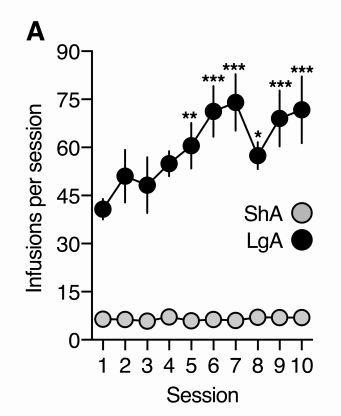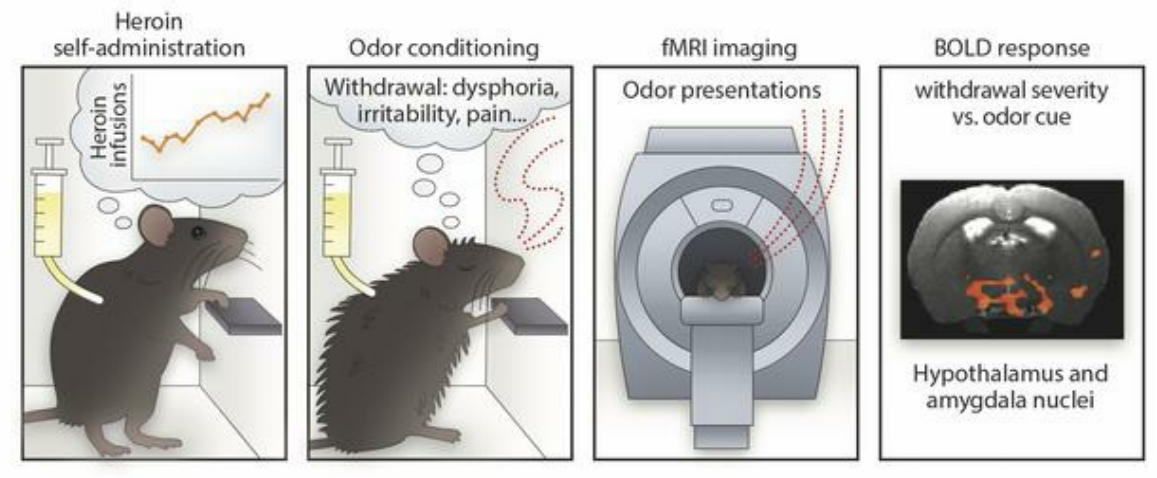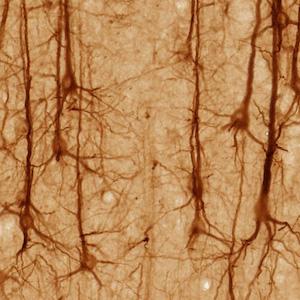Addiction is a complex phenomenon. Genetic, physiological, cultural, and socioeconomic factors all appear to play a role.
The ongoing opioid crisis is particularly troublesome due to its high death toll. In 2017, more than 70,000 Americans died from drug overdoses, the lion's share of which were due to opioids like heroin and fentanyl. People who break out of the addiction describe opioids in almost romantic terms:
"I loved it. It was my everything. I loved it more than my family, more than my job, more than my friends, more than my girlfriend at the time."
What is it about opioids that makes them so powerfully addictive? According to new research, one reason appears to be that they engage brain circuits associated with negative emotional learning, which in turn creates persistent unpleasant emotions that a user suppresses with yet more opioids.
 Reporting in the Journal of Clinical Investigation, a team of researchers subjected rats to a behavioral experiment. The rats were first trained to self-administer heroin. (Yes, they really can be taught to do that.) One group of rats was allowed only brief (1-hour) access to heroin, while the other group was allowed long (12-hour) access. As expected, the rats in the long-access group became addicted, using more and more heroin over time. (See graph.)
Reporting in the Journal of Clinical Investigation, a team of researchers subjected rats to a behavioral experiment. The rats were first trained to self-administer heroin. (Yes, they really can be taught to do that.) One group of rats was allowed only brief (1-hour) access to heroin, while the other group was allowed long (12-hour) access. As expected, the rats in the long-access group became addicted, using more and more heroin over time. (See graph.)
Then, while the rats were getting blitzed on heroin, the researchers gave them injections of either saline (which does nothing) or naloxone (which blocks the effect of heroin and triggers withdrawal symptoms). Simultaneously, they provided the rats with an olfactory cue, such as lemon- or vanilla-scented bedding. The rats that were getting naloxone quickly learned to associate withdrawal symptoms with the smell of lemon or vanilla. As a result, simply smelling lemon or vanilla made the addicted rats seek out more heroin.
In other words, the researchers demonstrated that the rats had undergone conditioned negative reinforcement, which is the reinforcing of one behavior (i.e., self-administering heroin) under a particular condition (i.e., smelling lemon or vanilla) to avoid something negative (i.e., withdrawal symptoms).

Finally, the authors exposed the rats to the scents and examined what happened in their brains. Regions of the amygdala (associated with fear) and the hypothalamus (associated with emotion) lit up in the addicted rats, demonstrating a link between these brain circuits and the rats' heroin-seeking behavior.
What does this mean for humans? It could mean that opioid addicts learn to associate unpleasant withdrawal symptoms with other stimuli in the environment, such as smells or visual cues. The presence of these otherwise neutral environmental cues could cause the addict to constantly anticipate withdrawal, encouraging him to use more opioids.
Obviously, a better understanding of this phenomenon could help shed light on relapsing and overdosing. To solve the opioid crisis, we need all the information we can get.
Source: Stephanie A. Carmack et al. "Heroin addiction engages negative emotional learning brain circuits in rats." Journal of Clinical Investigation. Published online: 26-March-2019. DOI: 10.1172/JCI125534




